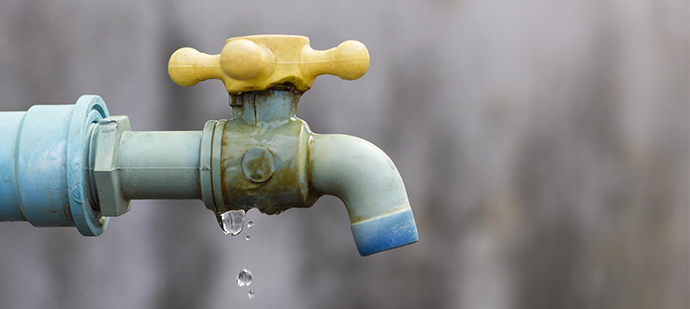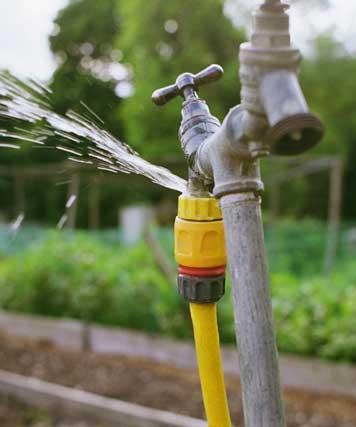6 Ways to Find Concealed Water Leaks in Your Home
6 Ways to Find Concealed Water Leaks in Your Home
Blog Article
Have you been trying to locate help and advice about Detecting hidden plumbing leaks?

Early discovery of leaking water lines can mitigate a potential catastrophe. Some small water leakages might not be visible.
1. Analyze the Water Meter
Every home has a water meter. Examining it is a proven way that assists you discover leaks. For starters, switch off all the water sources. Make certain nobody will purge, utilize the faucet, shower, run the cleaning device or dish washer. From there, go to the meter as well as watch if it will transform. Given that no person is utilizing it, there should be no movements. That shows a fast-moving leak if it relocates. Also, if you spot no changes, wait a hr or more and also examine back again. This implies you may have a sluggish leak that could even be below ground.
2. Check Water Usage
Analyze your water bills and track your water consumption. As the one paying it, you ought to notice if there are any kind of discrepancies. If you detect sudden changes, despite your usage coinciding, it indicates that you have leakages in your plumbing system. Bear in mind, your water costs ought to drop under the same array each month. An unexpected spike in your expense indicates a fast-moving leakage.
A consistent increase every month, even with the exact same behaviors, shows you have a sluggish leak that's also slowly escalating. Call a plumber to extensively inspect your home, especially if you feel a warm area on your flooring with piping underneath.
3. Do a Food Coloring Examination
30% comes from toilets when it comes to water usage. Examination to see if they are running properly. Drop flecks of food color in the tank as well as wait 10 mins. If the shade somehow infiltrates your bowl during that time without flushing, there's a leak in between the storage tank and dish.
4. Asses Outside Lines
Do not forget to inspect your outdoor water lines as well. Should water seep out of the connection, you have a loosened rubber gasket. One tiny leak can squander tons of water and increase your water costs.
5. Examine and Examine the Situation
House owners should make it a habit to inspect under the sink counters and also even inside cabinets for any bad odor or mold development. These two warnings indicate a leakage so punctual focus is needed. Doing regular assessments, also bi-annually, can save you from a major problem.
Extra importantly, if you recognize your home is already old, maintain a watchful eye on your heating systems, pipes, pipelines and so on. Check for stainings as well as weakening as most pipes and appliances have a life expectancy. They will certainly also naturally weaken as a result of damage. If you presume dripping water lines in your plumbing system, do not wait for it to rise. Call an expert plumber today so you do not end up with a terrible mess in your home.
Early discovery of dripping water lines can alleviate a possible disaster. Some little water leaks may not be visible. Checking it is a surefire means that helps you discover leaks. One small leakage can throw away bunches of water as well as spike your water expense.
If you suspect dripping water lines in your plumbing system, do not wait for it to intensify.
WARNING SIGNS OF WATER LEAKAGE BEHIND THE WALL
PERSISTENT MUSTY ODORS
As water slowly drips from a leaky pipe inside the wall, flooring and sheetrock stay damp and develop an odor similar to wet cardboard. It generates a musty smell that can help you find hidden leaks.
MOLD IN UNUSUAL AREAS
Mold usually grows in wet areas like kitchens, baths and laundry rooms. If you spot the stuff on walls or baseboards in other rooms of the house, it’s a good indicator of undetected water leaks.
STAINS THAT GROW
When mold thrives around a leaky pipe, it sometimes takes hold on the inside surface of the affected wall. A growing stain on otherwise clean sheetrock is often your sign of a hidden plumbing problem.
PEELING OR BUBBLING WALLPAPER / PAINT
This clue is easy to miss in rooms that don’t get much use. When you see wallpaper separating along seams or paint bubbling or flaking off the wall, blame sheetrock that stays wet because of an undetected leak.
BUCKLED CEILINGS AND STAINED FLOORS
If ceilings or floors in bathrooms, kitchens or laundry areas develop structural problems, don’t rule out constant damp inside the walls. Wet sheetrock can affect adjacent framing, flooring and ceilings.
https://www.servicemasterbyzaba.com/blog/how-to-detect-water-leakage-in-walls/

Hopefully you liked our topic about Top leak detection hacks. Thank you so much for taking time to browse our article post. Enjoyed our review? Please share it. Help somebody else check it out. Thanks for your time invested reading it.
Report this page